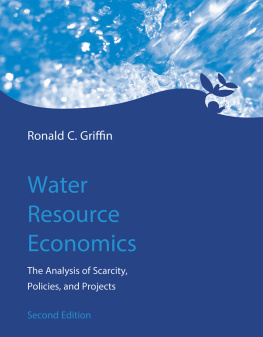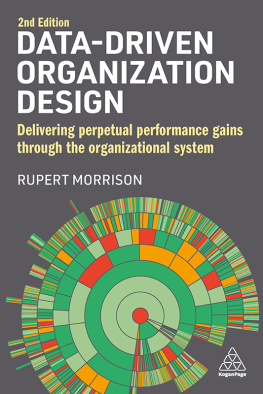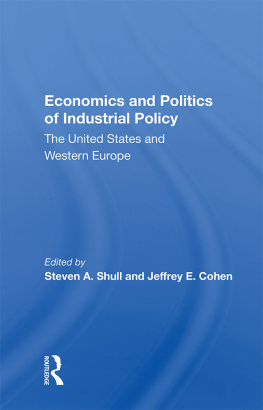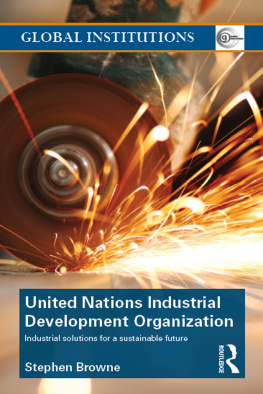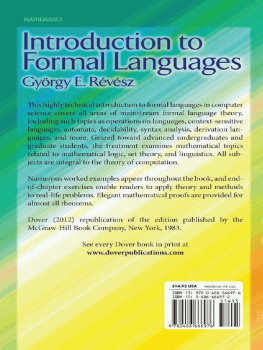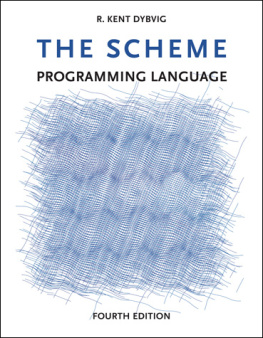INTRODUCTION TO INDUSTRIAL ORGANIZATION
SECOND EDITION
2017 Massachusetts Institute of Technology
All rights reserved. No part of this book may be reproduced in any form by any electronic or mechanical means (including photocopying, recording, or information storage and retrieval) without permission in writing from the publisher.
Library of Congress Cataloging-in-Publication Data
Names: Cabral, Luis M. B., author.
Title: Introduction to industrial organization / Luis M.B. Cabral.
Description: Second edition. | Cambridge, MA : MIT Press, [2017] | Includes bibliographical references and index.
Identifiers: LCCN 2016045858 | ISBN 978-0-262-33894-3
Subjects: LCSH: Industrial organization (Economic theory)
Classification: LCC HD2326 .C33 2017 | DDC 338.6dc21 LC record available
at https://lccn.loc.gov/2016045858
d_r0
Sixteen years have passed since the first edition of Introduction to Industrial Organization (IIO). Meanwhile, a lot has happened in the world and in the field of industrial organization (IO). A second edition of IIO was thus long overdue.
There are many things new in the new edition. It has been my experience that IIO can be used as a text both in undergraduate economics and business courses; and in various non-economics masters programs. With that in mind, now includes a more comprehensive overview of the basic microeconomics required for the understanding of IO: consumer utility and demand, firm costs and pricing (including price discrimination), competitive markets, market failure.
IO has witnessed a tremendous boost in terms of empirical analysis; however, most textbooks provide little guidance in this area. The present edition provides an introduction to statistical methods in three important areas: demand identification (Section 2.3); analysis of cartels and collusion (Section 9.4); and modeling product differentiation (Section 14.1).
In response to many requests, I added selected advanced materials. First, several chapters now include advanced sections (in smaller type) that provide an analytical treatment of ideas previously presented verbally. End-of-chapter exercises help the reader push the boundary, (a) formalizing ideas that are only briefly touched upon in the text; (b) generalizing results that are presented in simple form; or (c) applying conceptual results to the empirical analysis of particular industries (I included a new section at the end of each chapter: applied exercises).
Finally, much of what is new in this edition corresponds to new and updated examples, both in the main text and as separate boxes.
Despite all of these innovations and additions, IIO 2nd Edition retains the basic spirit of IIO 1st Edition: a book that is issue driven rather than methodology driven. Although I make extensive use of models (because I think they are very useful ways of understanding reality), I only introduce a new model when this is justified in terms of the marginal benefit in understanding some issue. The focus on issues is also reflected on the focus on policy implications. While this was already the case in IIO 1st Edition, IIO 2nd Edition includes a policy section at the end of most chapters.
_________________
In particular, I should emphasize that the list of references in the book does not reflect a balanced survey of the IO literature. To stress this point, I have chosen not to make direct reference to sources in the text, leaving bibliographic references to notes at the end of the text. (These are the notes marked with numbers, as opposed to footnotes as this one, which are marked with letters.)
IIO 1st Edition included a long lists of acknowledgements. Since 2000, the number of teachers, students and other readers who provided suggestions, corrections or simply encouragement has enlarged my debt roll considerably. I apologize for possible omissions in what is now a long list: Dan Ackerberg, Mark Armstrong, Helmut Bester, Bruno Cassiman, Allan Collard-Wexler, Pascal Courty, Greg Crawford, Leemore Dafny, Jan De Loecker, Kenneth Elzinga, Joe Farrell, Alfonso Gambardella, Joshua Gans, David Genesove, Ben Hermalin, Mitsuru Igami, Jos Jansen, Przemyslaw Jeziorski, Chris Knittel, Tobias Kretschmer, Francine LaFontaine, Ramiro Tovar Landa, Robin Lee, Frank Mathewson, David Mills, GianCarlo Moschini, Petra Moser, Hiroshi Ohashi, Ariel Pakes, Michael Peitz, Rob Porter, Michael Riordan, Daniil Shebyakin, John Small, Adriaan Soetevent, Scott Stern, John Sutton, Frank Verboven, Reinhilde Veugelers, Len Waverman, Matthew Weinberg, Ali Yurukoglu, Peter Zemsky, Christine Zulehner, and various anonymous reviewers who took their time to read previous drafts. Claire Finnigan, Mike Cheely and John Kim provided excellent research assistance. Finally, I thank various classes at London Business School, London School of Economics, Berkeley, Yale, and New York University, whom I taught based on previous versions of this book and from whom I received useful feedback. Unfortunately, I alone remain responsible for remaining errors and omissions.
_________________
Since much of what was in the first edition is also present in the second edition, the following lists includes acknowledgements included in the first edition as well.
What is industrial organization? It might help to start by clarifying the meaning of industrial. According to Websters New World Dictionary, industry refers to manufacturing productive enterprises collectively, especially as distinguished from agriculture (definition 5 a). Industry also means any large-scale business activity, as in the tourism industry, for example (definition 4 b).
This double meaning is a frequent source of confusion regarding the object of industrial organization. For our purpose, industrial should be interpreted in the sense of Websters definition 4 b. That is, industrial organization applies equally well to the steel industry and to the tourism industry; as far as industrial organization is concerned, there is nothing special about manufacturing.
Industrial organization is concerned with the workings of markets and industries, in particular the way firms compete with each other. The study of how markets operate, however, is the object of microeconomics; as a Nobel prize winner put it, there is no such subject as industrial organization, meaning that industrial organization is nothing but a chapter of microeconomics. The main reason for considering industrial organization as a separate subject is its emphasis on the study of a firms strategies that are characteristic of market interaction: price competition, product positioning, advertising, research and development, and so forth. Moreover, whereas microeconomics typically focuses on the extreme cases of monopoly and perfect competition, industrial organization is primarily concerned with the intermediate case of oligopoly, that is, competition between a few firms (more than one, as in monopoly, but not as many as in competitive markets).
For the above reasons, a more appropriate definition of the field would be something like economics of imperfect competition. But the term industrial organization was adopted, and I am not the one to change it.
Industrial organization is concerned with the workings of markets and industries, in particular the way firms compete with each other.
Examples are often better than definitions. In this section, I look into the market for anti-ulcer, anti-heartburn drugs, a case that touches on a number of issues of interest to industrial organization. The case thus provides a useful introduction to the next section, where I look more systematically at the central questions addressed by industrial organization.
Until the late 1970s, there was no effective drug to treat ulcers; severe cases required surgery. Then a research project at Smith, Kline & French (which is now part of GlaxoSmithKline) culminated with the discovery of cimetidine, a wonder drug sold under the brand name Tagamet. The production cost of Tagamet was rather small compared to the price for which it was sold. In cases like this, the huge gap between price and cost is bound to raise a variety of issues. For example, it may seem unfair that many suffering patients be deprived of a cheap-to-produce drug simply because price is so high. Then again, without revenues from drugs such as Tagamet it seems impossible for firms like Smith, Kline & French to continue churning out blockbuster drugs.
Next page

